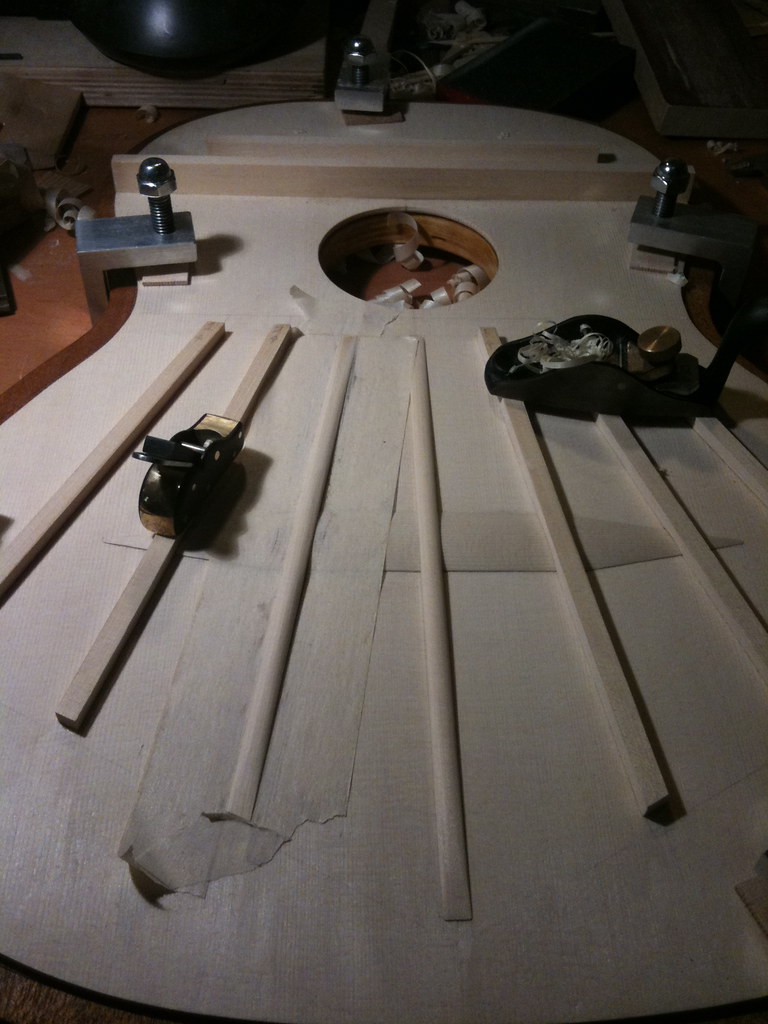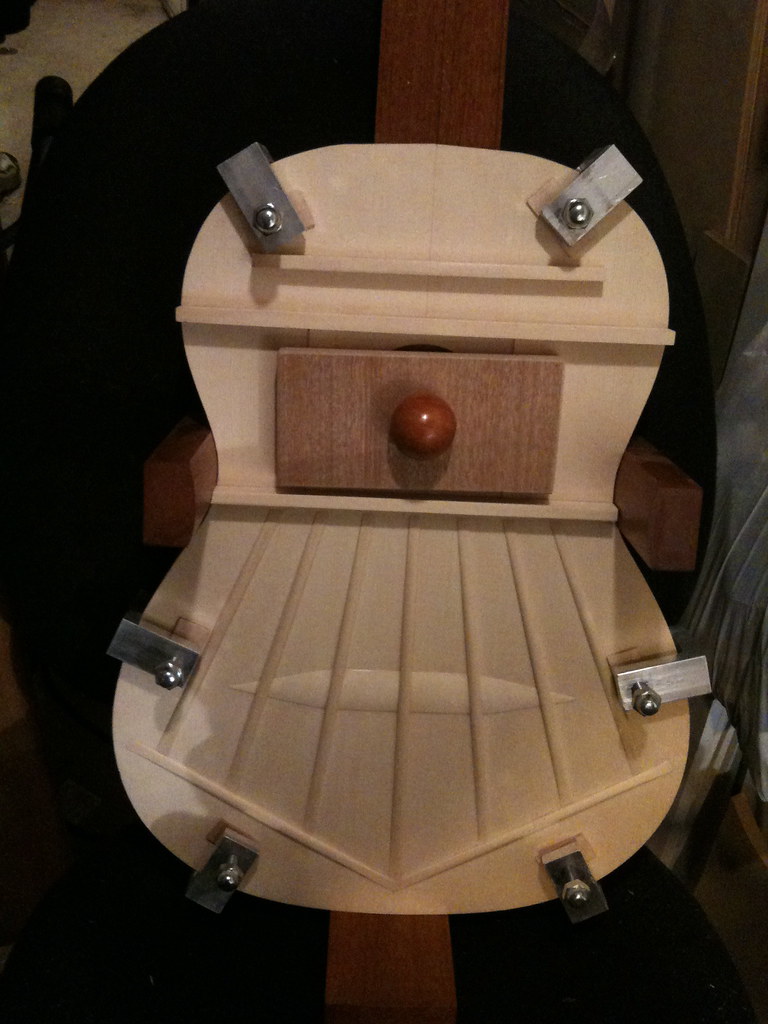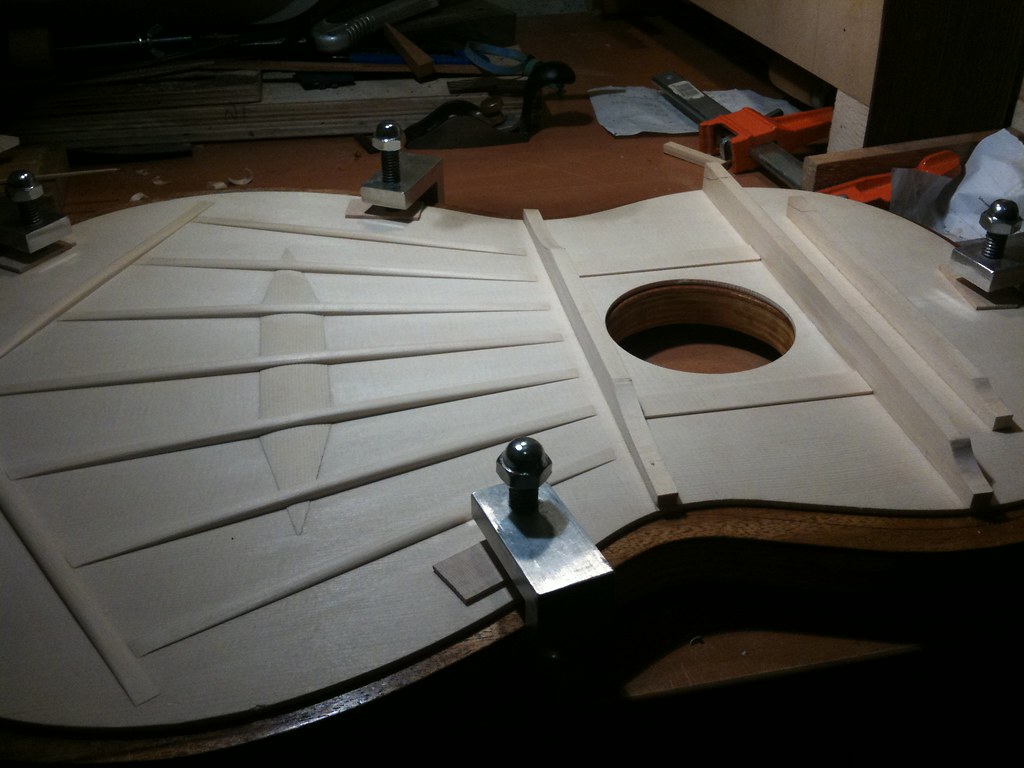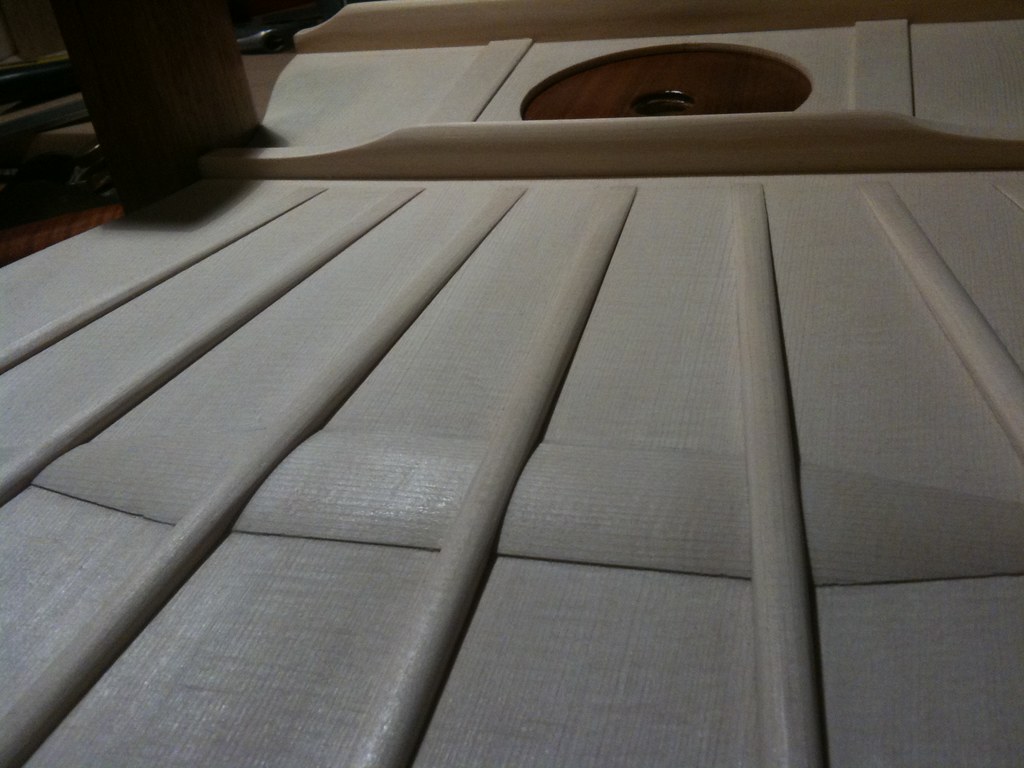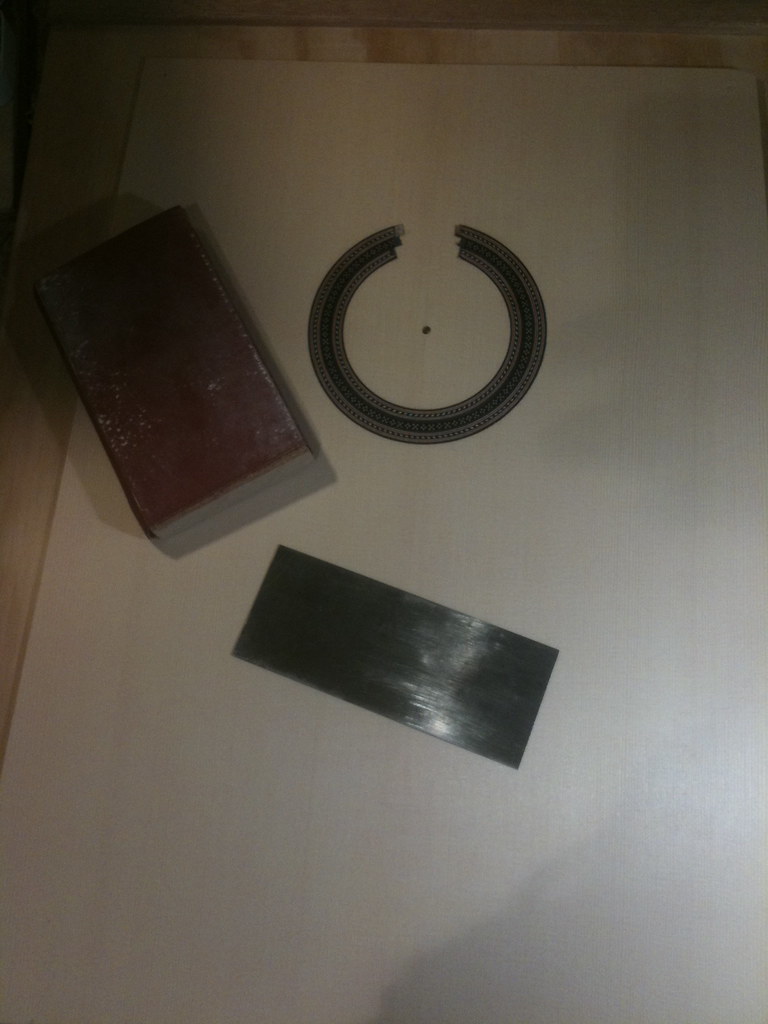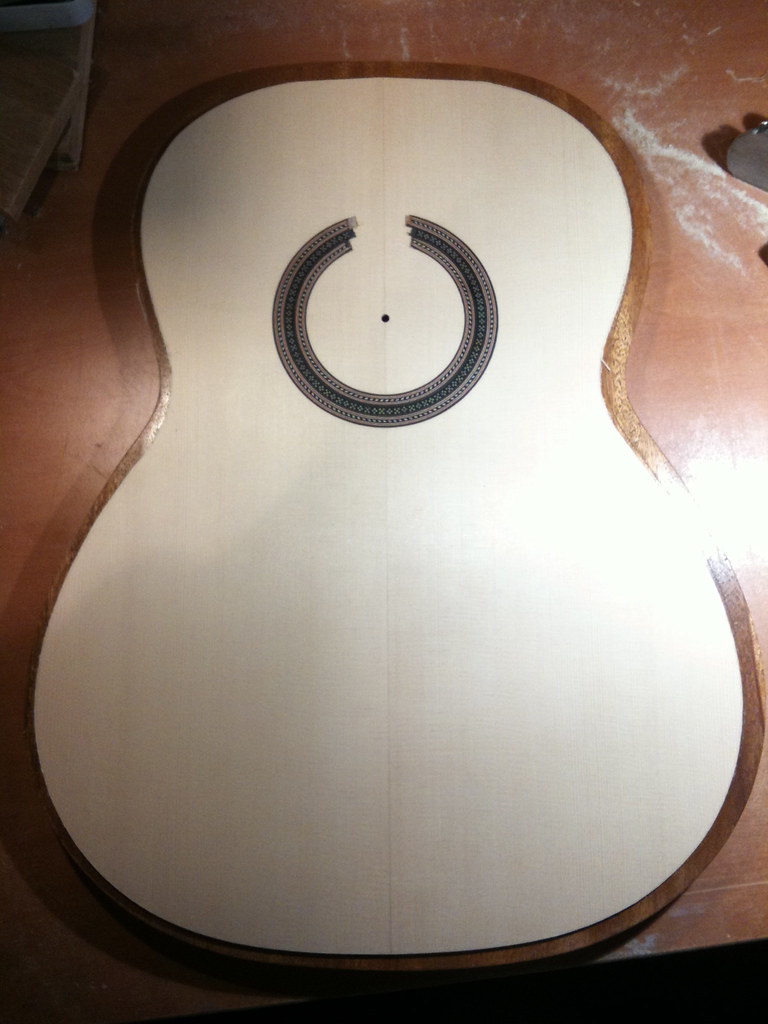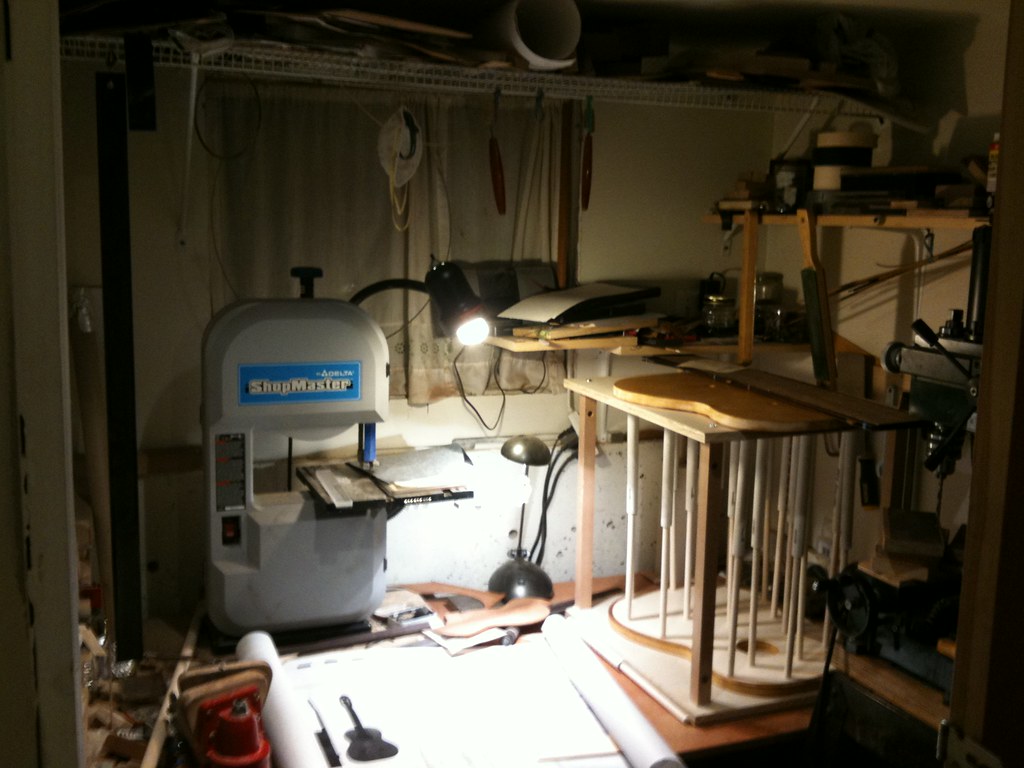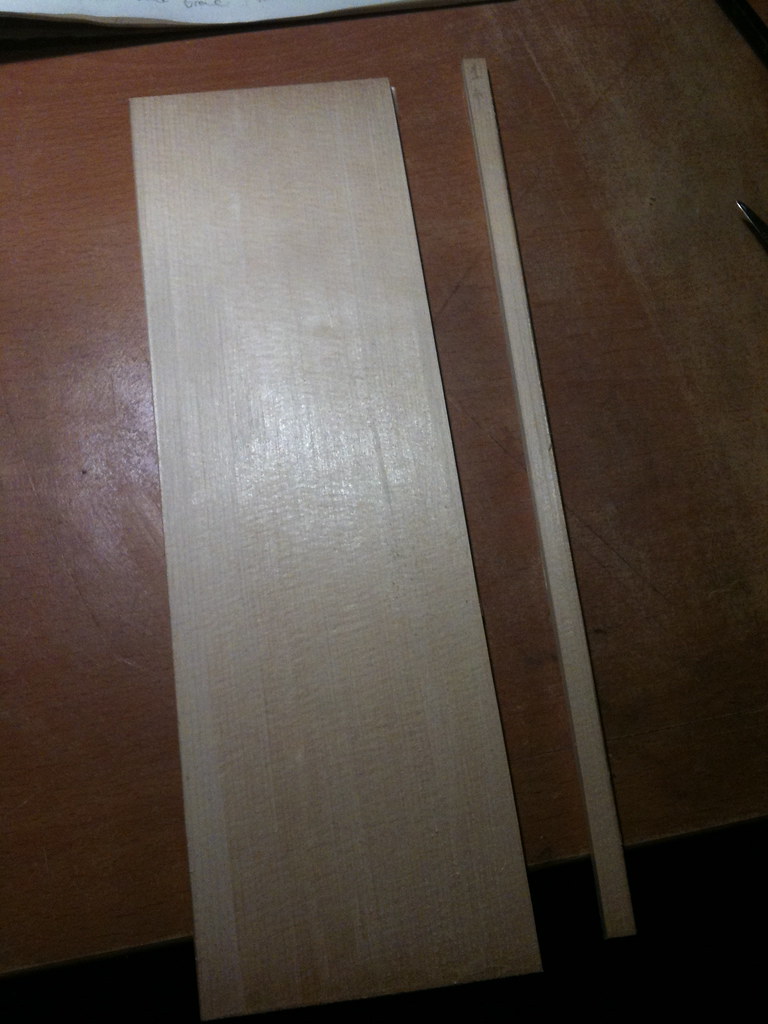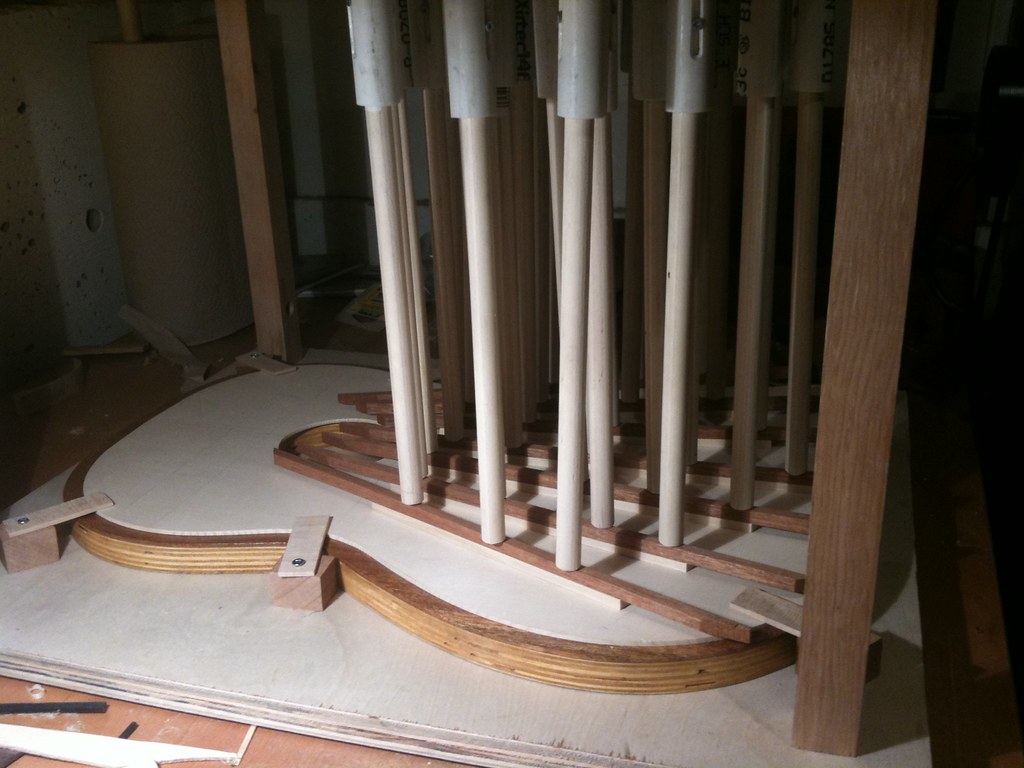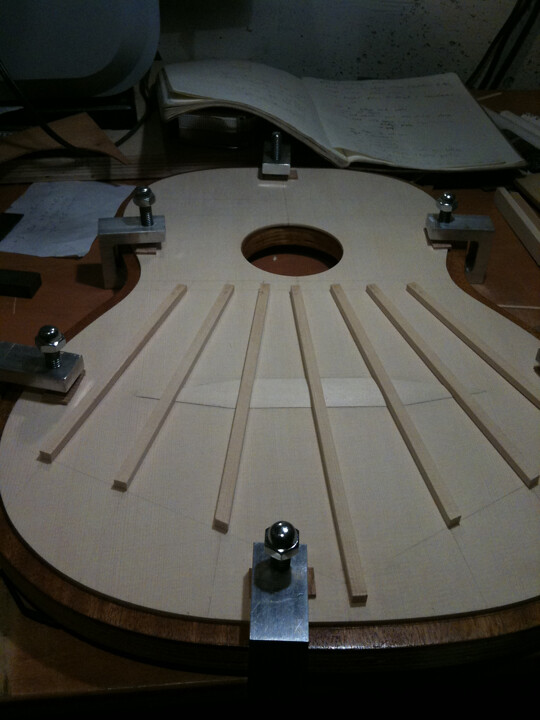This post will document the completion of the top bracing. Here I am using a finger plane to shape the fan braces one at a time. The plane has been designed specifically for this task (see previous posts for details), to allow it to cut very close to the top. The fan braces have a curved profile from end to end, and a round profile along their width. There is much debate as to which shapes and size give the 'best' sound. The bracing pattern I am using here, is the 'fan' style, common to most traditional instruments. Since I am building this guitar in the style of Hermann Hauser, I am using the pattern from one of his instruments as a reference.
Here are the fan braces after shaping, and a particularly magnificent curled shaving. Final finish was done with sandpaper.
Here you can see the arched profile of the fan braces, and the sound hole reinforcements. I have begun to shape the harmony bars too.
Finally here is all the bracing complete. It's almost a crime how much time I put into fine finishing the part of the guitar that nobody will every see! In the next post I'll be moving on to bending the sides.
